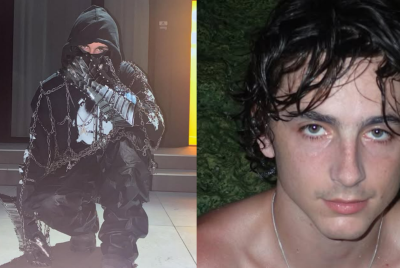'Classless' Julia Fox Accused of Glorifying 'Political Violence' With 'Disgusting' Jackie O Costume
Julia Fox calls her Halloween recreation 'a statement'; JFK's grandson calls it 'disgusting, desperate and dangerous'.

Julia Fox's Halloween recreation of Jackie Kennedy's blood-stained pink suit has ignited a fierce debate about taste, trauma, and the limits of celebrity provocation.
The actress and model attended Julio Torres' Halloween party on 30/10/2025 in a pale pink two-piece, a pillbox hat, and white gloves, with simulated blood across the jacket, an explicit reference to the outfit Jacqueline Kennedy wore the day President John F. Kennedy was assassinated on 22 November 1963.
Fox posted the images and an accompanying explanation on her Instagram page, insisting the look was an homage to Jackie O's decision to 'not change out of her blood-stained clothes' as an act of witness and protest.
What Fox Said And Why She Claims It Matters
Fox moved quickly to frame the images as a considered gesture rather than mere shock tactics, writing that Jackie's refusal to change after the assassination was 'performance, protest and mourning all at once' and 'a woman weaponising image and grace to expose brutality'.
Her caption invoked the famous line attributed to Jackie, 'I want them to see what they've done,' and argued the recreation interrogated 'trauma, power, and how femininity itself is a form of resistance'.
The Instagram post is the clearest primary account of Fox's intent and is the touchstone for defenders who view the look as a provocation with political and aesthetic aims, not a trivial Halloween gag. Photographs and reels she shared from the party are the source material that sparked the online dispute.
Family and Public Backlash: 'Disgusting, Desperate And Dangerous'
The pushback was immediate and came from a powerful quarter: Jack Schlossberg, grandson of John F. Kennedy and Jacqueline Kennedy, posted on X (formerly Twitter) that 'Julia Fox glorifying political violence is disgusting, desperate and dangerous. I'm sure her late grandmother would agree.'
Julia Fox glorifying political violence is disgusting, desperate and dangerous. I’m sure her late grandmother would agree.
— Jack Schlossberg (@JBKSchlossberg) October 31, 2025
His intervention transformed a celebrity fashion controversy into a rebuke from the Kennedy family line and amplified criticism across social platforms.
For many critics, the recreation crosses an ethical line because it evokes a real death and a family's trauma; opponents called the depiction 'tasteless' and argued it sensationalises violence for personal attention.
Supporters counter that art and fashion have long used unsettling imagery to force public confrontation with history and power. Coverage in mainstream outlets shows the public split, from condemnation to cautious contextualisation.
The Historical Object at the Heart of the Row
The pink suit itself is a documented artefact of national tragedy: Jackie Kennedy's jacket, skirt, shoes, bag, and stockings were reportedly folded and preserved in a towel and subsequently deposited with the National Archives in College Park, Maryland.
A deed of gift executed by Caroline Kennedy in 2003 places the items under strict conditions, barring public display or general research access for 100 years — effectively keeping the garments out of sight until at least 2103. That archival deed underscores the suit's status not simply as clothing but as a charged historical relic.
Historians long cite Jackie's decision to remain in the suit for the swearing-in of Lyndon B. Johnson as an act aimed at national continuity and an insistence that the nation 'see' the consequences of political violence. Whether a contemporary restaging by a public figure honours or exploits that history is the central point of contention.
Julia Fox's defence, to use fashion as a language of protest and memory, will satisfy those who view art as provocation; for others, the recreation is simply a gratuitous re-staging of sorrow.
The argument raises an old question anew: when a private act of mourning becomes public property, who, if anyone, has the right to re-perform it?
© Copyright IBTimes 2025. All rights reserved.





















